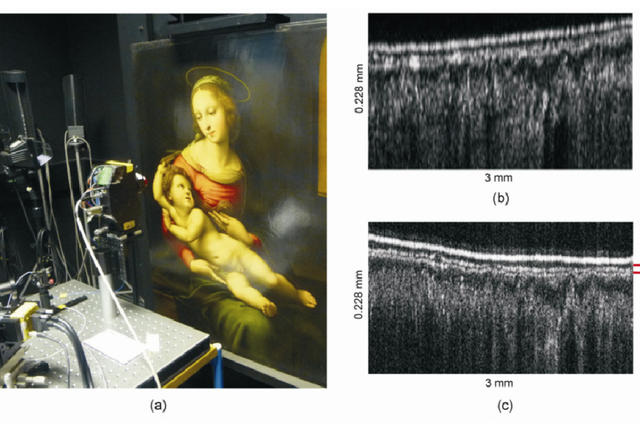
Curious to know what secrets Mona Lisa is hiding beneath the newest layer of varnish on her surface? Up until recently, art conservationists were required to physically remove a sliver of a painting to get an accurate cross section of its many layers. But thanks to Haida Liang and her team of researchers at Nottingham Trent University’s School of Science and Technology, examining the layers beneath the surface of a painting may no longer require such invasive techniques.
Due to ethical regulations, conservationists can only remove a chip that’s smaller than a millimeter in size from around an edge or a damaged part of a painting in order to examine it under a microscope. But Liang’s team, working with the National Gallery in London, has developed a non-invasive technique that uses an updated form of Optical Coherence Tomography (OCT) to create a cross section of the painting.
via Mental Floss





